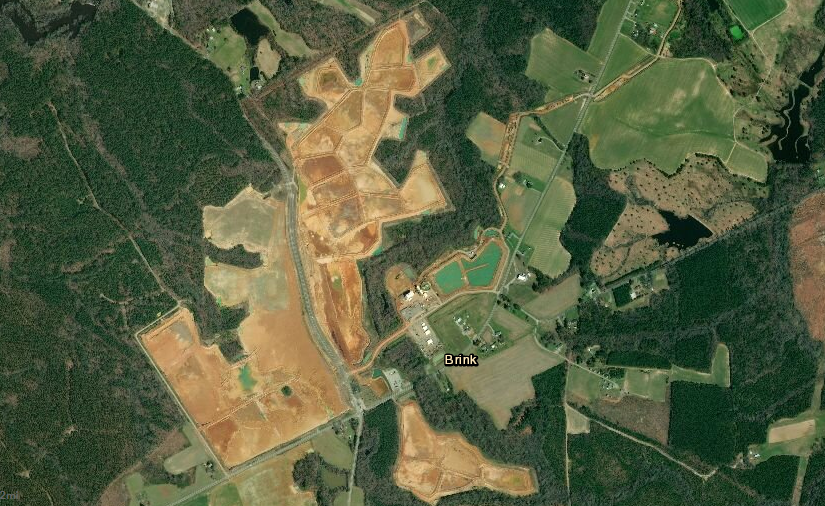
the Old Hickory titanium deposit has been mined west of Emporia
Source: ESRI, ArcGIS Online

the Old Hickory titanium deposit has been mined west of Emporia
Source: ESRI, ArcGIS Online
The Old Hickory deposit was created after rivers transported material eroded from the Blue Ridge to the Atlantic Ocean. Sediments were churned by waves at the shoreline. Light minerals, such as sand-sized crystals of quartz (silicon dioxide), were carried further away from heavy titanium and zircon crystals. During times of marine transgression in the Pliocene Epoch, titanium was concentrated in heavy mineral sand deposits on the beaches.1
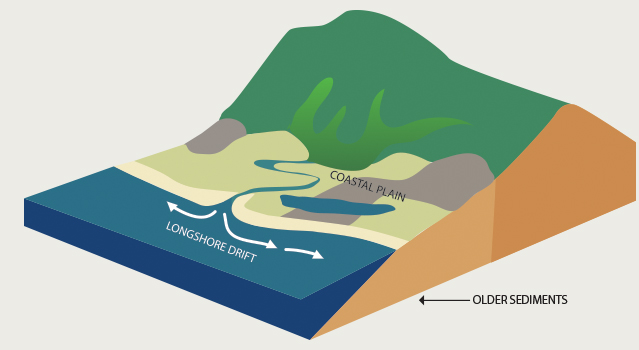
titanium and zircon crystals were eroded from the Blue Ridge and washed downstream to the Atlantic Ocean shoreline, where sediments were reworked through wave action
Source: Iluka Resources, Virtual Mine Site Tour
Iluka Resources mined the Old Hickory deposit in southeastern Virginia between 1997-2016. Mining started at the Old Hickory deposit in Sussex County, and the heavy mineral concentrator plant started operations there in 1998. The mined material was transported as a wet slurry to the concentrator plant.
When the richest areas of the initial Old Hickory site were exhausted, the concentrator plant was moved in 2009 to the area being mined at Brink in Greensville County. That site was mined until 2015.
A wet concentrator plant was also built for the Concord site, which was mined until 2014. The initial Old Hickory mined areas were reclaimed. Ore was also mined at Aurelian Springs in North Carolina.2
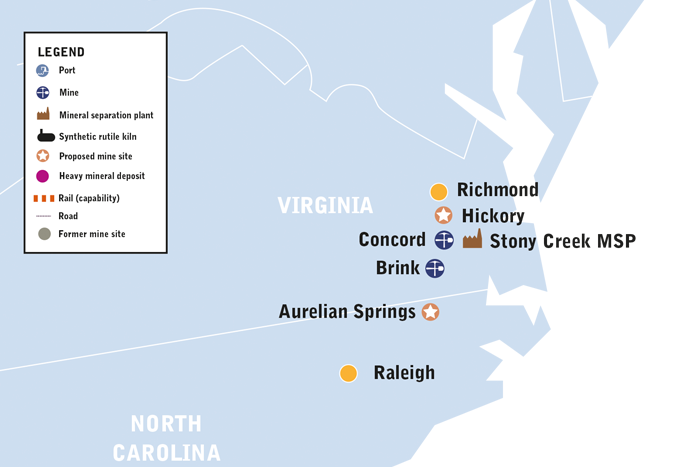
Ikula Resources extracted titanium and zircon from the Old Hickory deposit in southeastern Virginia between 1997-2016
Source: Iluka Resources, Stony Creek, Virginia
At strip mines in Dinwiddie and Sussex counties, the soil was moved to one side and then the unconsolidated sands were stripped. Heavy ilmenite, rutile, and zircon crystals were separated from the non-valuable components by gravity. The ore was shipped to a dry mill at Stony Creek, where it was concentrated by electrostatic and magnetic separation. Titanium dioxide was sold for pigment, while zircon was sold for use in ceramics.
Waste material was transported back to one of the areas that had been strip mined and put into the depression on the ground. The soil which had been put aside was placed back on top of the waste material, as the site was reclaimed.3
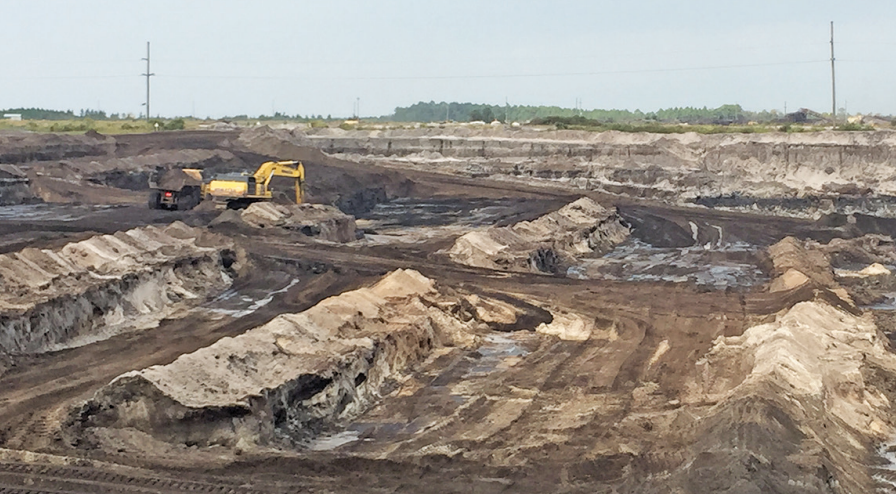
in the Coastal Plain, heavy titanium minerals within lighter sediments are extracted using gravity separation at shallow, temporary strip mines
Source: US Geological Survey (USGS), Titanium
The remove-and-replace process, preserving the topsoil while stripping heavy minerals from the sandy sediments underneath, minimized environmental impacts. Titanium mining in the Coastal Plain involved disturbing land down to about 50' in depth, directly affecting less than 100 acres at a time. Pits were temporary and refilled as the machinery moved to the next area to be stripped. No piles of tailings were visible after site reclamation.
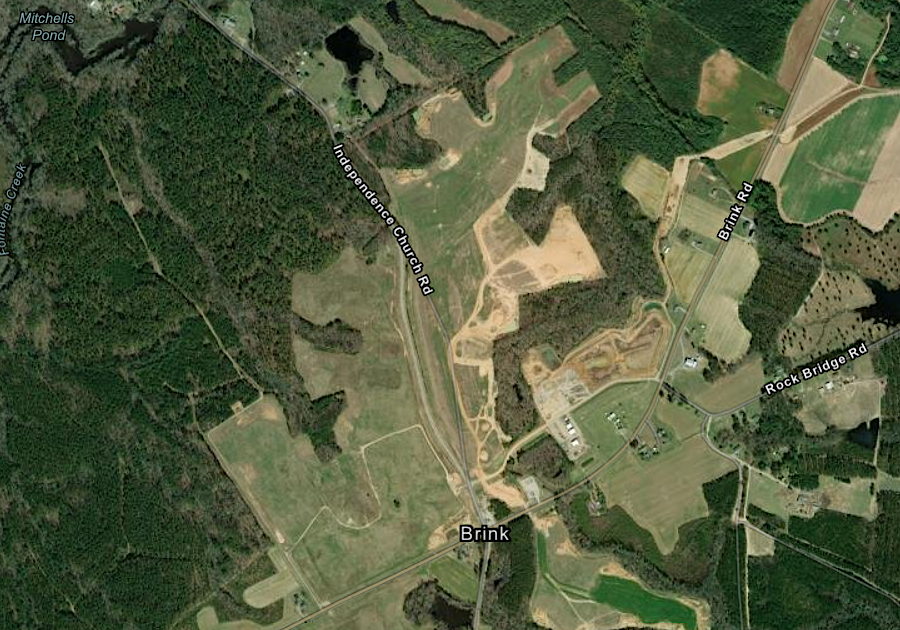
titanium strip mines in Sussex County after reclamation
Source: ESRI, ArcGIS Online
Titanium minerals are silicates or oxides, not sulfides. In contrast to gold mining in the Piedmont, acid mine runoff is not created by titanium mining in the Coastal Plain. In contrast, processing of mined material at the U.S. Titanium site located in the Blue Ridge generated ferrous sulfate and heavy metals in the waste products. The Nelson County titanium mine ended up as a Superfund site.
As described by the US Geological Survey:4
Source: Twin Pines Minerals, Twin Pines Minerals – Saunders Demonstration Mine
The mined deposits were in the Nottoway River watershed, but not in sensitive environmental habitats.
A proposal by Twin Pines Minerals to mine Trail Ridge in Georgia to produce titanium dioxide generated great public interest. Removal of that "saturated sandhill" would affect the hydrology of Okefenokee Swamp and National Wildlife Refuge, where the local economy was based on tourism.
Opponents claimed pumping more than a million gallons of groundwater every day for the mine would alter the hydrology permanently. The sand barrier blocks groundwater from draining from the largest ecologically intact blackwater swamp remaining in the United States. Georgia regulators were convinced in 2024 that the project was small enough, and far enough away from the swamp (three miles at the closest), to allow mining.
That particular threat to the Okefenokee Swamp and National Wildlife Refuge was removed in 2025 when the Conservation Fund committed $60 million to purchase 7,800 acres from Twin Pines Minerals. As described by the Secretary of the Interior in 1997:5
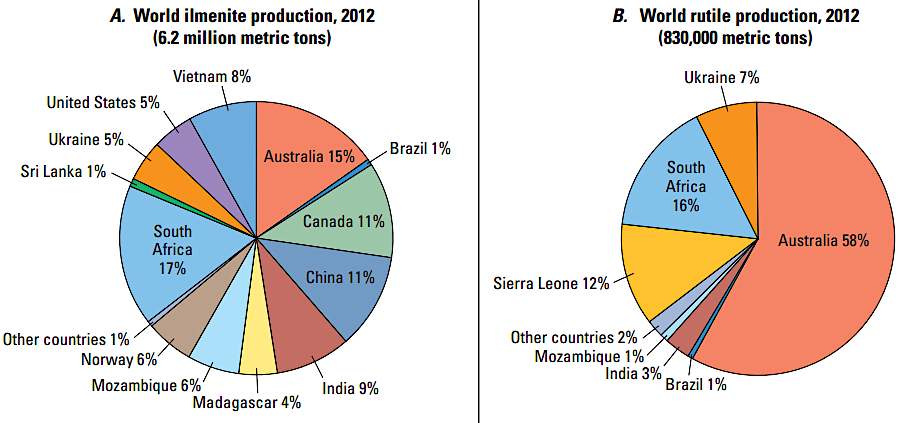
most production of ilmenite and rutile comes from outside the United States
Source: US Geological Survey (USGS), Titanium (Figure T6)
Iluka Resources mined the Old Hickory deposit between 1996-2017. Atlantic Strategic Minerals, founded in 2020 and based in Petersburg, acquired the site. The company announced in 2024 that it would invest $50 million to restart the extraction of titanium, zirconium, and rare-earth elements from the deposit. At current prices, the company had identified enough minerals to justify mining 20-40 acres for six years.6
The mine reopened in 2025 to produce ilmenite and zircon, with plans for the mineral separation plant to produce monazite as well. The ilmenite is processed into titanium dioxide, used for high-temperature ceramic tiles and cladding of fuel cells in nuclear reactors. Monazite is a component of magnets manufactured for electric vehicles and wind turbines. A spokesperson for Atlantic Strategic Minerals said in 2025:7
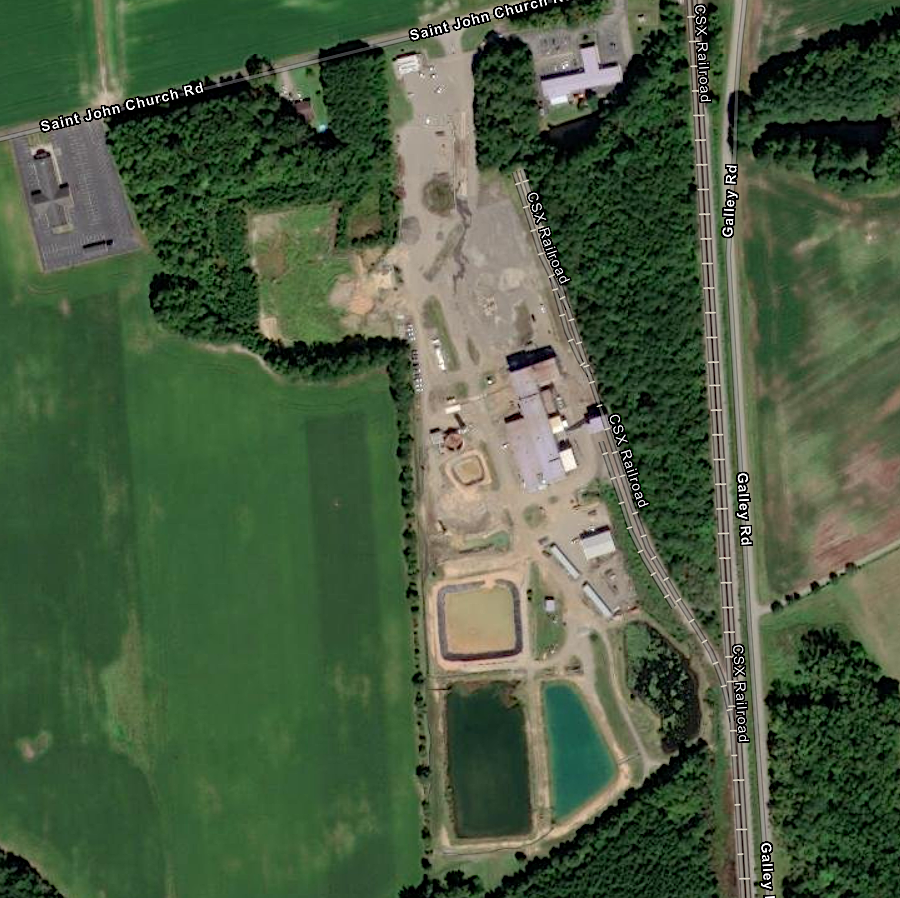
Atlantic Strategic Minerals re-opened the processing plant near Stoney Creek in 2025
Source: ESRI, ArcGIS online
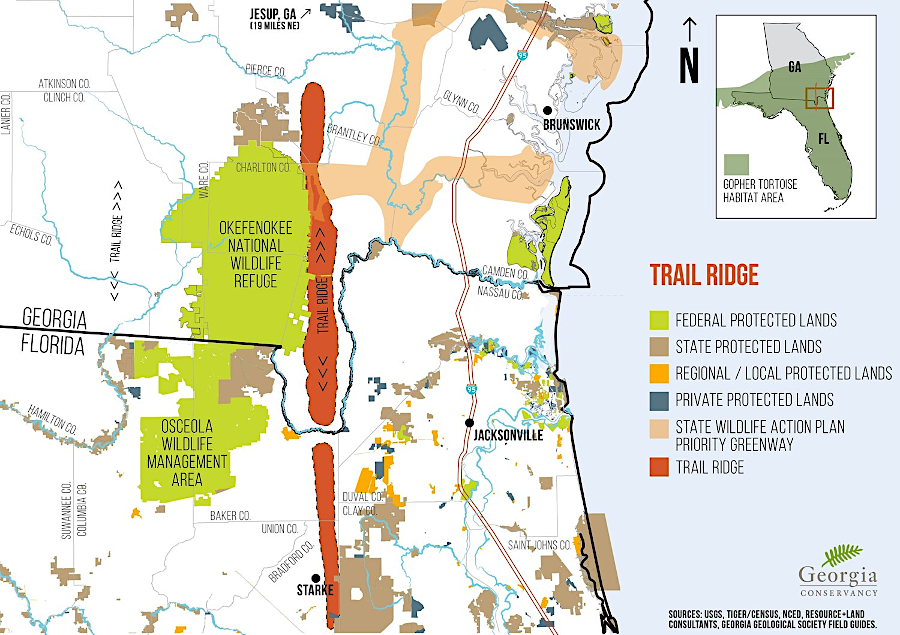
proposed titanium mining on Georgia's Coastal Plain could alter the hydrology that sustains the Okefenokee Swamp and National Wildlife Refuge
Source: Georgia Conservancy, Mining Threatens the Okefenokee Swamp

Ikula Resources processed sediments to separate ilmenite, rutile, and zircon from non-commercial material
Source: Iluka Resources, Images for Media Download